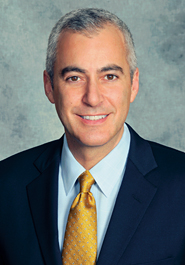High-frequency traders. Can’t live with ’em. Can’t live without ’em.
That was the message this year coming out of the bigger brokers as they took steps to both win HFT business and help their institutional clients thwart HFT trading.
Now that the Securities and Exchange Commission’s Rule 15c3-5, or market access rule, has gone into effect, the brokers are scrambling to put into place an infrastructure that would allow them to process orders from latency-sensitive high-frequency trading firms. At the same time, they are deploying technology to help their money manager clients combat what they contend are the HFT’s predatory trading practices. Brokers have reworked their algorithms, built new trading devices, deployed special-purpose ECNs, and, in one extreme example, completely reshaped their dark pools.
But can they do both? Can the brokers serve two masters? Charles Susi, global co-head of direct execution at UBS, believes so.

"By providing execution capabilities to all segments, we can bring different kinds of liquidity together-and offer even more crossing opportunities," the exec told Trading Magazine this summer.
Despite the reassuring words, the buyside is still concerned about brokers’ handling of their orders. This year they stepped up their pressure on the sellside to both provide them with more information regarding the venues to which their orders travel and to supply them with technology to deal with the presence of HFTs.
By some accounts, HFT volume represents half of all industry volume. To placate their worried customers, brokers have taken a range of steps to add safety to the trading experience. At a minimum, the brokers are working with industry group FIX Protocol Limited to supply trading venue information to the buyside with every trade report. At the other extreme, they’re building new trading venues from scratch.
Credit Suisse, for example, launched an ECN called Light Pool that largely excludes high-frequency traders. Rival Morgan Stanley is completely revamping the matching methodology for its primary dark pool to favor larger orders, the type unlikely to be used by HFTs.
At the same time, the brokers aren’t about to let a money-making opportunity pass them by. The SEC’s new sponsored access rule requires all firms providing direct market access to incorporate risk checks. This could slow down latency-sensitive HFTs, but is deemed crucial to protecting the marketplace.
Previously, many of the more successful providers of sponsored access did not incorporate risk checks. The big brokers however largely shied away from the business. But now that the playing field has been leveled, they are embracing sponsored access wholeheartedly. Their efforts are appreciated by HFTs.
"If you find a bulge bracket firm who has either built or acquired a very competitive high-frequency trading platform, then you get all the trappings of a full-service prime brokerage offering to go with it," Manoj Narang, founder and chief executive officer of HFT firm Tradeworx, told this publication.



